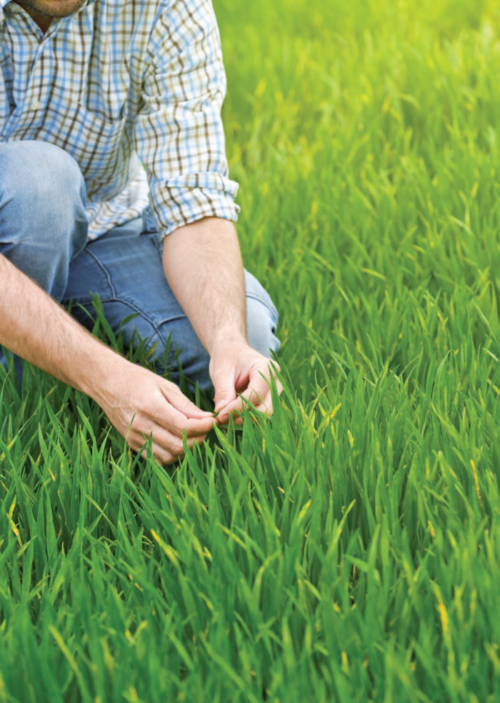Dr. Michael Gaffney reports on the recent EU workshop ‘Demonstration Farms on Integrated Pest Management’
Since 2014, growers within the European Union are obliged to grow in an Integrated Pest Management (IPM) compliant manner. Integrated Pest Management (or Integrated Crop Management if you prefer) is a broad definition which covers almost every agronomic decision a grower makes, from seed and variety selection, soil management, crop protection through to harvest. Given the multitude of decisions and variables which are required by growers to achieve an economically viable crop, analysing and deciding which decisions have the most benefit for the grower, while minimising the overall environmental impact of growing the crop, can be challenging for growers on an individual basis. This challenge and how to best respond to it was the target of a recent EU workshop in Bonn, Germany, which focused on the concept of IPM demonstration farms.
According to a pre-workshop survey, 11 EU member states run and fund IPM demonstration farms.
What normally happens on a demonstration farm is that a grower or farmer works with a local advisor to implement a limited set of new IPM techniques. The work is supported by research staff, changes are monitored and the information is fed back to the researchers for analysis. Some of the programmes are extensive, with countries such as France having 1900 participant farms, across a range of arable and horticultural crops. In the main, most
countries that run IPM demonstration farms have between three and 60 participants. The DEPHY project, which is a large French project set up in 2010 and spanning 1,900 farms, looks to implement IPM practices on participant farms, but with an emphasis on overall pesticide reduction. The project commenced in 2010 but as yet, has not resulted in an overall reduction in pesticide usage. This is not a failure of the project; the aim of Integrated pest management is not to eliminate synthetic pesticides from the crop protection armoury, but to ensure that all other available and economically sensible approaches have been considered before the use of pesticides. The main driver of pesticide usage was unfavourable weather in 2012 and 2013 which led to an increase in fungicide usage. A similar story emerged at the Danish IPM demonstration farms (seven in total), where again poor weather negated any reduction in pesticide use. These findings point to a lack of available and effective alternatives to synthetic pesticides that face many growers who are keen to implement more comprehensive IPM systems on their farms, but sometimes the alternative control strategies may not exist yet.
“The aim of Integrated pest management is not to eliminate synthetic pesticides from the crop protection armoury, but to ensure that all other available and economically sensible approaches have been considered before the use of pesticides”

We also have to be careful in not confusing Integrated pest management with Pesticide Usage reduction. It is a stated aim of the IPM demonstration farms set up in Denmark, France and Germany to reduce overall pesticide application and where justified this is an appropriate target. However, the single goal of reducing pesticide usage while not fully considering the impact on grower income, the risk of crop failure, the potential for the development of disease and pest resistance and the selection of appropriate and low impact pesticide chemistry should also not be ignored. It was interesting that the growers involved in viticulture and orchard growing have this year withdrawn from the German demonstration farms, as they felt the focus on pesticide reduction was not compatible with them producing economically viable crops.
How we measure IPM was another focus of many of the presentations. A common measurement of IPM is Treatment Frequency Index (TFI), which means the number of times the growing area can be treated with a full rate application of pesticides per year. This is a crude measurement, as it makes no allowance for the relative toxicity of the substance, nor the subsequent comparative yield of the crop. Therefore growers can be using less environmentally impactful pesticides, but this not being reflected in their TFI score, nor does it reflect the fact that across Europe growers can achieve widely different yields per hectare. Therefore it is essential that we develop new ways of measuring pesticide usage that reflects this, but also develop IPM indicators or measurement tools which are not solely focussed on pesticide usage. The Danish advisory service SEGES presented on their IPM points system, which gave a score for all IPM approaches, not just pesticide reduction. Of 394 farms assessed the vast majority scored over 50% making them some way IPM compliant, with rotation, the use of decision support systems and the
use of environmentally benign plant protection products being the most common IPM tools used. The system is not necessarily used as a definite measurement, but more so as a target for continual improvement for the grower. Another interesting outcome of the Danish research is that there is a direct correlation between the IPM awareness of growers and subsequent IPM adoption. This highlights the importance, that even if we do not have a series of wide-ranging IPM techniques in all crops, there is a value in providing continual knowledge transfer and instruction in IPM, so when new techniques and products are developed they are more likely to be adopted.
From an Irish perspective, our presentation on the Teagasc arable BETTER farm programme and the Department of Agriculture funded project, EPIC (Establishing a Platform for IPM in Ireland) was well received. One of the tools being developed as part of the EPIC project is a survey to measure IPM awareness of growers, which clearly fills a research gap in many European countries. The focus on the importance of measuring the financial impact of implementing IPM was seen as extremely important, as ultimately IPM will only be successful if growers can implement these systems and protect and increase incomes. Notably, there was little mention of the role of retailers (and ultimately consumers), in implementing wide-ranging IPM systems which need more consideration and debate. As the ultimate buyer of many Irish horticultural crops, their role in imposing achievable quality standards which are compatible with available IPM systems may be most critical of all. ✽
 Dr. Michael Gaffney is an entomology and IPM researcher working in the Horticulture Department in Teagasc, having previously worked at the University of Wales, Swansea and at UCD. He leads a diverse research group focusing on crop protection and crop quality issues. He can be contacted at Michael.Gaffney@Teagasc.ie Dr. Michael Gaffney is an entomology and IPM researcher working in the Horticulture Department in Teagasc, having previously worked at the University of Wales, Swansea and at UCD. He leads a diverse research group focusing on crop protection and crop quality issues. He can be contacted at Michael.Gaffney@Teagasc.ie |





